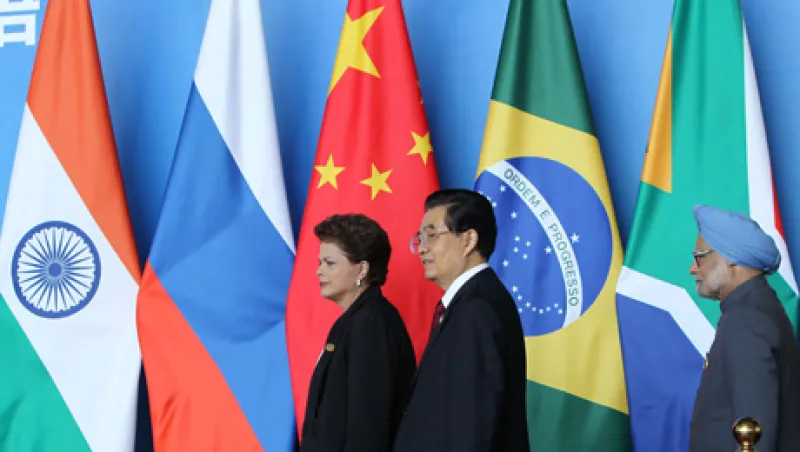As the European Union unravels, the BRICS are coming together. In mid-October seven major stock exchanges in Brazil, Russia, India, China and South Africa announced plans to cross-list derivatives on their benchmark indexes. Brics investors can already purchase exchange-traded funds on, say, the Standard & Poor’s 500 Index. But by the second quarter of 2012, a South African, for example, should be able to buy Brazilian futures and options on the Bovespa Index through the Johannesburg Stock Exchange. The alliance holds appeal for domestic investors who want to go offshore. “South Africans are subject to certain restrictions and limits on foreign investment,” says John Burke, the JSE’s head of listings. “But once Brazil’s Ibovespa is listed on the JSE, those limits fall away for that index.”
Likewise, Russians will be able to invest in derivatives on Hong Kong’s Hang Seng Index, and Indians in derivatives on Russia’s Micex Index — in their home currencies and, to a greater or lesser degree, free of capital controls. After cross-listing derivatives the alliance would like to offer a composite index on all of the exchanges, Burke says. Eventually, it may even cross-list currency indexes.
Participating exchanges hope the Brics pact, whose members had a combined market capitalization of $8.74 trillion as of October 31, will mean greater liquidity. But that’s not their only wish. Romnesh Lamba, head of market development for Hong Kong Exchanges and Clearing, says the alliance will help his exchange attract Chinese investors as they gain permission to take their money offshore. “We believe many of them will come to Hong Kong if we offer access to these other emerging markets,” he says.
HKEx first suggested the Brics alliance last June, shortly after the four BRIC nations expanded their club to include South Africa. It also approached China’s Shanghai and Shenzhen stock exchanges, but neither was ready to sign on. Their addition would have pushed the alliance’s market cap past $12.56 trillion.
By joining forces, the Brics exchanges want to attract institutional as well as retail dollars. E. Paul Rowady Jr., a senior analyst with consulting firm TABB Group in New York, thinks they may succeed. “The thought that an investor can go to one Brics exchange and gain access to all of them is a compelling idea,” Rowady says.
HKEx’s Lamba and the JSE’s Burke believe the alliance will prompt ETF providers to create products on the underlying indexes. Individual investors outside the Brics may also find the pact useful, Burke says. “Guys in London, for instance, who want exposure to the different Brics markets might trade on the JSE because we’re in the same time zone,” he explains.
But Lamba doesn’t expect great interest from big global institutional investors given their preference for fungible futures. “There the risk management book, the underlying trading currency or even the actual contract is the same across different time zones,” he says.
For now the alliance will focus on domestic investors. That’s partly because wealth is growing so quickly in the Brics, Lamba explains, but also because investors there and in other emerging markets favor securities whose underlying equities are from their own countries. Although capital controls often influence that decision, these investors also know the local companies and like their growth stories. “And they recognize that growth opportunities in their home markets are potentially greater than in the U.S. or Europe, particularly in the last few years,” Lamba says.
And once investors have had their fill of domestic offerings? Hong Kong is the only Brics jurisdiction without capital controls. Consequently, Indians who want to invest in Russian growth or Russians who want to go into Brazil can’t do so easily, Lamba says. “The only real way to play those markets locally is the ETF, and not all the Brics have ETFs on the underlying index of the other countries,” he explains.
If the alliance proceeds, demand should vary from market to market. But with plans for revenue-sharing among its member exchanges, this low-cost, low-risk play has little downside, Lamba asserts: “The question is how much of the upside will materialize.”






